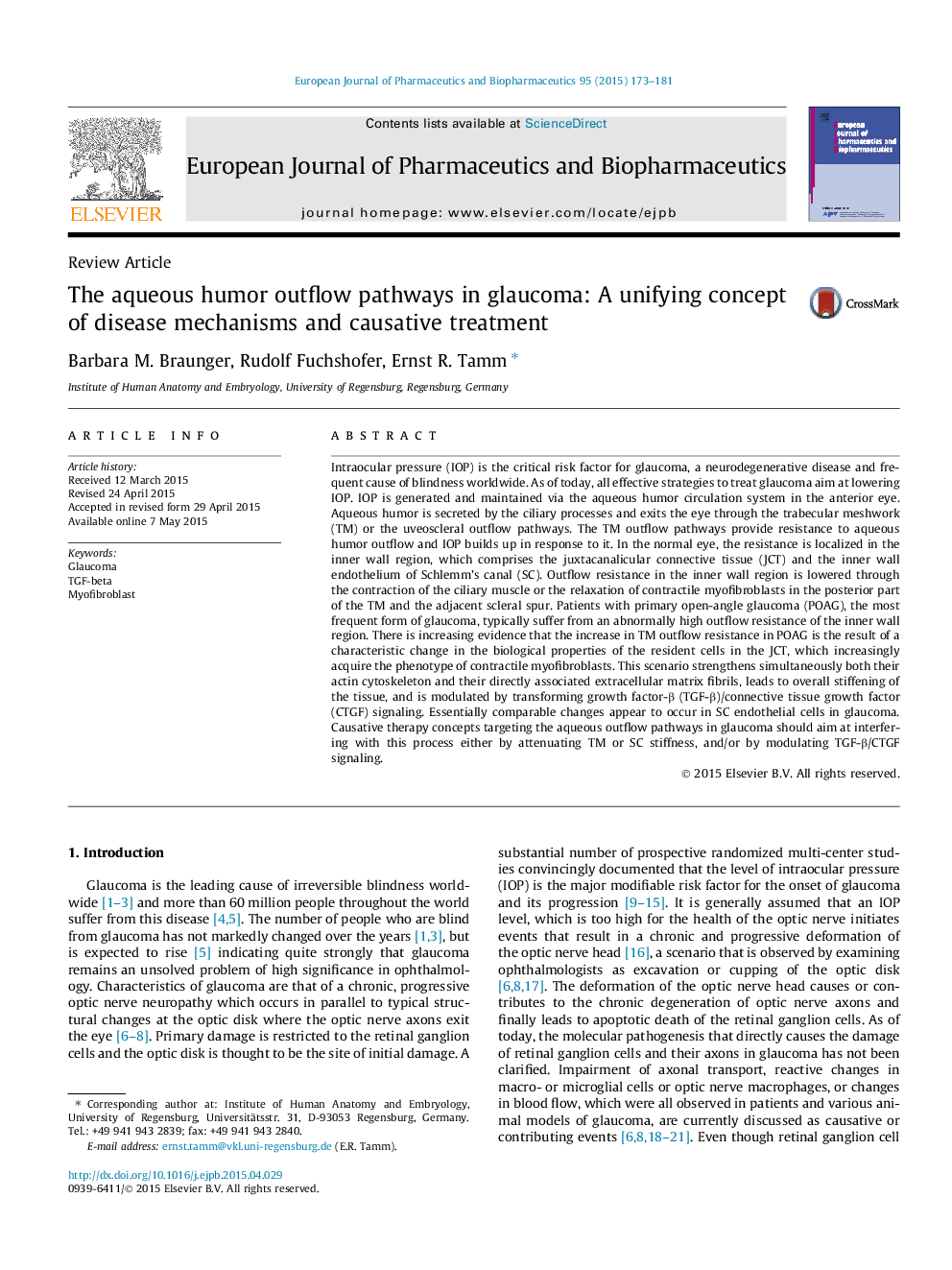| کد مقاله | کد نشریه | سال انتشار | مقاله انگلیسی | نسخه تمام متن |
|---|---|---|---|---|
| 2083280 | 1545329 | 2015 | 9 صفحه PDF | دانلود رایگان |
Intraocular pressure (IOP) is the critical risk factor for glaucoma, a neurodegenerative disease and frequent cause of blindness worldwide. As of today, all effective strategies to treat glaucoma aim at lowering IOP. IOP is generated and maintained via the aqueous humor circulation system in the anterior eye. Aqueous humor is secreted by the ciliary processes and exits the eye through the trabecular meshwork (TM) or the uveoscleral outflow pathways. The TM outflow pathways provide resistance to aqueous humor outflow and IOP builds up in response to it. In the normal eye, the resistance is localized in the inner wall region, which comprises the juxtacanalicular connective tissue (JCT) and the inner wall endothelium of Schlemm’s canal (SC). Outflow resistance in the inner wall region is lowered through the contraction of the ciliary muscle or the relaxation of contractile myofibroblasts in the posterior part of the TM and the adjacent scleral spur. Patients with primary open-angle glaucoma (POAG), the most frequent form of glaucoma, typically suffer from an abnormally high outflow resistance of the inner wall region. There is increasing evidence that the increase in TM outflow resistance in POAG is the result of a characteristic change in the biological properties of the resident cells in the JCT, which increasingly acquire the phenotype of contractile myofibroblasts. This scenario strengthens simultaneously both their actin cytoskeleton and their directly associated extracellular matrix fibrils, leads to overall stiffening of the tissue, and is modulated by transforming growth factor-β (TGF-β)/connective tissue growth factor (CTGF) signaling. Essentially comparable changes appear to occur in SC endothelial cells in glaucoma. Causative therapy concepts targeting the aqueous outflow pathways in glaucoma should aim at interfering with this process either by attenuating TM or SC stiffness, and/or by modulating TGF-β/CTGF signaling.
Figure optionsDownload high-quality image (94 K)Download as PowerPoint slide
Journal: European Journal of Pharmaceutics and Biopharmaceutics - Volume 95, Part B, September 2015, Pages 173–181
